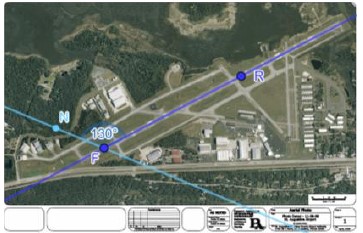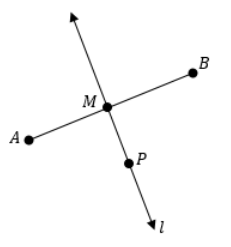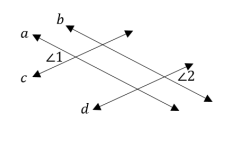MA.912.GR.1.1
Clarifications
Clarification 1: Postulates, relationships and theorems include vertical angles are congruent; when a transversal crosses parallel lines, the consecutive angles are supplementary and alternate (interior and exterior) angles and corresponding angles are congruent; points on a perpendicular bisector of a line segment are exactly those equidistant from the segment’s endpoints.
Clarification 2: Instruction includes constructing two-column proofs, pictorial proofs, paragraph and narrative proofs, flow chart proofs or informal proofs.
Clarification 3: Instruction focuses on helping a student choose a method they can use reliably.
Alternate version of this benchmark for students with significant cognitive disabilities.
Connecting Benchmarks/Horizontal Alignment
- MA.912.GR.3.2
- MA.912.GR.3.3
- MA.912.GR.5.1
- MA.912.GR.5.2
- MA.912.GR.6.1
- MA.912.GR.6.2
- MA.912.T.1.1
- MA.912.LT.4.3
- MA.912.LT.4.8
- MA.912.LT.4.10
Terms from the K-12 Glossary
- Angle
- Congruent
- Corresponding Angles
- Supplementary Angles
- Transversal
- Vertical
Vertical Alignment
Previous Benchmarks
Next Benchmarks
Purpose and Instructional Strategies
In grade 3, students described and identified line segments, rays, perpendicular lines and parallel lines. In grade 4, students classified and solved problems involving acute, right, obtuse, straight and obtuse angle measures. In grade 8, students solved problems involving supplementary, complementary, adjacent and vertical angles. In Geometry, students prove relationships and theorems and solve problems involving lines and angle measure. In later courses, students will study lines and angles in two and three dimensions using vectors and they will use radians to measure angles.- While focus of this benchmark are those postulates, relationships and theorems listed in Clarification 1, instruction includes other definitions, postulates, relationships or theorems such as the midpoint of a segment, angle bisector, segment bisector, perpendicular bisector, the angle addition postulate and the segment addition postulate. Additionally, some postulates and theorems have a converse (i.e., if conclusion, then hypothesis) that can be included.
- Instruction includes the connection to the Logic and Discrete Theory benchmarks when developing proofs. Additionally, with the construction of proofs, instruction reinforces the Properties of Operations, Equality and Inequality. (MTR.5.1)
- For example, when proving that vertical angles are congruent, students must be able to understand and use the Substitution Property of Equality and the Subtraction Property of Equality.
- Instruction utilizes different ways students can organize their reasoning by constructing various proofs when proving geometric statements. It is important to explain the terms statements and reasons, their roles in a geometric proof, and how they must correspond to each other. Regardless of the style, a geometric proof is a carefully written argument that begins with known facts, proceeds from there through a series of logical deductions, and ends with the statement you are trying to prove. (MTR.2.1)
- For examples of different types of proofs, please see MA.912.LT.4.8.
- Instruction includes the connection to compass and straight edge constructions and how the validity of the construction is justified by a proof. (MTR.5.1)
- Students should develop an understanding for the difference between a postulate, which is assumed true without a proof, and a theorem, which is a true statement that can be proven. Additionally, students should understand why relationships and theorems can be proven and postulates cannot.
- Instruction includes the use of hatch marks, hash marks, arc marks or tick marks, a form of mathematical notation, to represent segments of equal length or angles of equal measure in diagrams and images.
- Students should understand the difference between congruent and equal. If two segments are congruent (i.e., PQ ≅ MN), then they have equivalent lengths (i.e., PQ = MN) and the converse is true. If two angles are congruent (i.e., ∠ABC ≅ ∠PQR), then they have equivalent angle measure (i.e., ∠ABC = ∠PQR) and the converse is true.
- Instruction includes the use of hands-on manipulatives and geometric software for students to explore relationships, postulates and theorems.
- For example, folding paper (e.g., patty paper) can be used to explore what happens with angle pairs when two parallel lines are cut by a transversal. Students can discuss the possible pairs of corresponding angles, alternate interior angles, alternate exterior angles and consecutive (same-side interior and same-side exterior) angles. (MTR.2.1, MTR.4.1)
- Problem types include mathematical and real-world context where students evaluate the value of a variable that will make two lines parallel; utilize two sets of parallel lines or more than two parallel lines; or write and solve equations to determine an unknown segment length or angle measure.
- Instruction for some relationships or postulates may be necessary in order to prove theorems.
- For example, to prove that consecutive angles are supplementary when a given transversal crosses parallel lines, students will need to know the postulate that states corresponding angles are congruent.
- For example, to prove or use the perpendicular bisector theorem, students will need to have knowledge of the definition of a perpendicular bisector of a segment and midpoint.
Common Misconceptions or Errors
- Students may misuse the terms corresponding, alternate interior and alternate exterior as synonyms of congruent. To help address this conception, students should develop the understanding that these angles are congruent if and only if two parallel lines are cut by a transversal. Similarly, same-side angles are supplementary if and only if the two lines being cut by a transversal are parallel.
Instructional Tasks
Instructional Task 1 (MTR.7.1)- Runways are identified by their orientation relative to Magnetic North as viewed by an approaching aircraft. Runway directions are always rounded to the nearest ten degrees and the zero in the “ones” column is never depicted (i.e., 170 degrees would be viewed as “17” and 20 degrees would be seen as “2”). The same runway has two names which are dependent on the direction of approach.
- Use the aerial of Northeast Florida Regional Airport in St. Augustine, FL to answer the
questions below.

- Part A. Flying to the runway from point F, the runway is Runway 13. This means the heading is 130° off magnetic north. Draw a line through point R that goes to magnetic north, what is true about that line and line NF
- Part B. On the line drawn in Part A, draw and label a point, A.
- Part C. Measure angle FRA.
- Part D. How does your answer from Part C support you answer from Part A?
- Part E. What is the name of the runway when approaching from point R
Instructional Task 2 (MTR.2.1, MTR.4.1, MTR.5.1)
- Part A. Given AB, use a compass and straightedge to construct line such that line and AB form 90° and the point of intersection, M, is the midpoint of AB
- Part B. Suppose that point P lies on line as shown below. What conjecture can be made about point P? Which endpoint of AB is closest to point P? Use a compass to test your conjecture.

- Part C. What if a point, Q, was added to line Which endpoint of AB is closest to point Q How does this compare with your conjecture in Part B?
- Part D. How can the construction from Part A and the conjectures from Part B and Part C be used to prove that AP = BP given that line is the perpendicular bisector of AB and point P lies on line ?
Instructional Items
Instructional Item 1- What value of will make M the midpoint of PQ if PM = 3 − 1 and PQ = 5 + 3?
Instructional Item 2
- Two lines intersect at point P. If the measures of a pair of vertical angles are (2 − 7)° and ( + 13)°, determine and the measures of the other two angles?
Instructional Item 3
- Based on the figure below, complete a proof to prove that ∠1 ≅ ∠2 given that || and || .

General Information
Subject Area: Mathematics (B.E.S.T.)
Grade: 912
Strand: Geometric Reasoning
Standard: Prove and apply geometric theorems to solve problems.
Date Adopted or Revised: 08/20
Status: State Board Approved
This benchmark is part of these courses.
